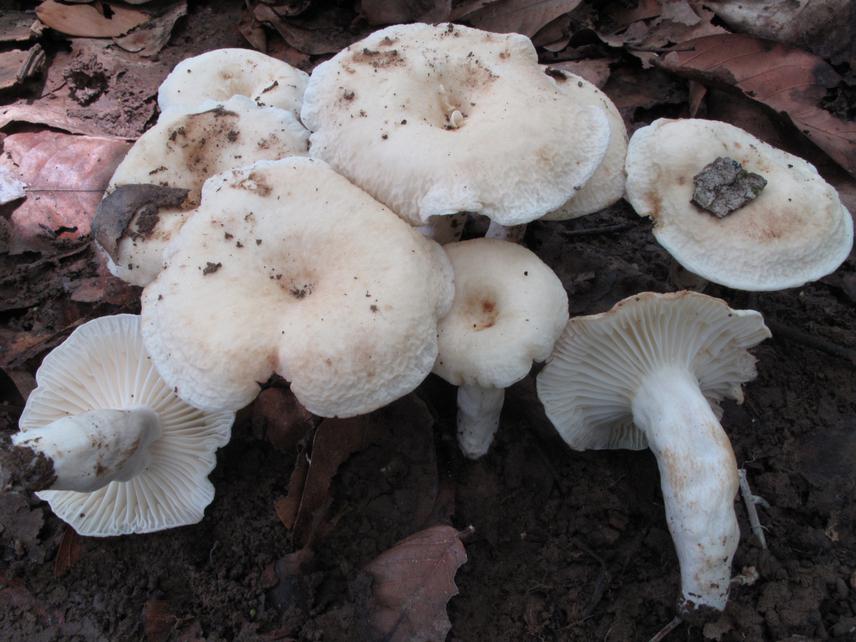Gbesso Florence Koussi
My project aims to:
- assess the distribution, population demography, socioeconomic and cultural importance and subsequent impacts of utilization of Lactarius foetens Verbeken & van Rooij. in its occurring zone in Benin;
- set an education program for conservation and sustainable use of L. foetens in its occurring zone in Benin.

Lactarius foetens. ©Prof. N S Yorou, University of Parakou, Benin.
The conservation and sustainable use of biology diversity constitute two major targets of the Convention on Biological Diversity. This convention recognizes that the key to maintaining biological diversity depends upon using this diversity in a sustainable manner. For this, it was recommended the engagement of every country in conservation planning of all biodiversity. But in Benin, the implementation of Convention results is very limited because the conservation programs on the ground, meaningful research studies and capacity development efforts have often been undertaken on the plant. The fungi resources conservation has completely been forgot. Furthermore, the observation is disappointing when we consider the rare, endemic and threatened species fungal. Lactarius foetens Verbeken & van Rooij. is one priority fungi because of its endemism to Dahomey-Gap. In Benin, it is highly threatened in its distribution area and the main threats and factors affecting its dynamics and the practical schemes to implement for its conservation and sustainable use have not been evaluated. So, the overall objective of this Rufford Small Grant is to set long term conservation strategies for L. foetens. Specifically, it aims to: assess the distribution and population demography of L. foetens in occurring zone; assess socioeconomic and cultural importance, subsequent impacts of utilization on the species and set an education program for conservation and sustainable use of the species in its occurring zone.
Quantitative data on distribution and abundance will be allowed to understand the manner in which the taxon is spatially arranged with information on high population density. We shall obtain information on patterns distribution usable in the models of prediction and a distribution map of the species will be created. The survey of habitat will be facilitated the knowledge on ectomycorrhizal tree. Uses and principal threat of the species inventory will help to understand the fatal modes of use the species and to set best measures of conservation. We will mobilize the involvement of local population in the various activities of the project while short and midterm conservation measures will be developed with the participation of indigenous forest management committees. Awareness activities of the present project will help to promote and encourage understanding of the importance of species and the measures required for its conservation through a permanent or continual awareness and its inclusion in educational programmes.